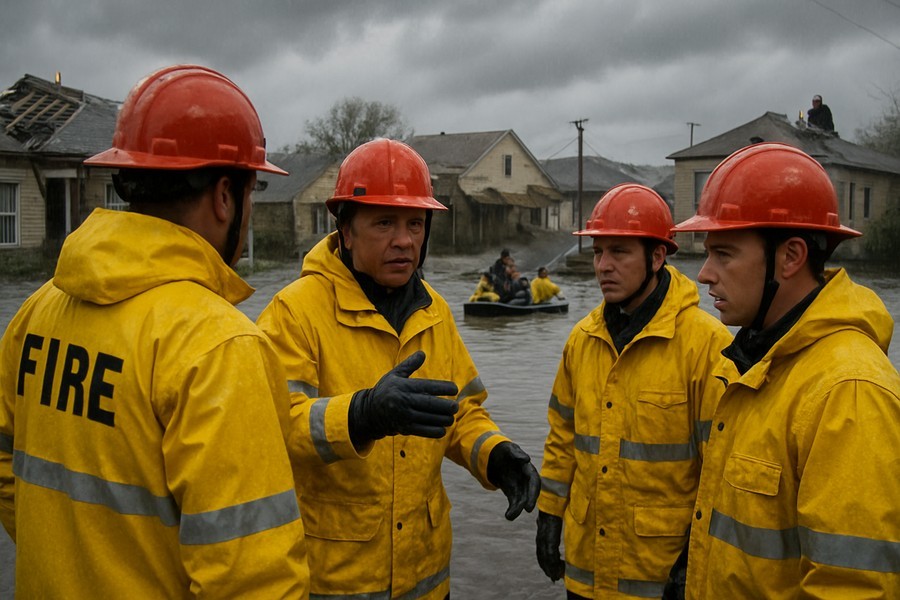
Revisiting Changes in Disaster Response and Management Post-Katrina
Hurricane Katrina, two decades past, is still a vivid memory for many due to its devastating impact. The disaster claimed the lives of over 1,300 people, and forced several thousands more to leave their homes.
Investigations and reports that followed the disaster revealed that much of the loss and destruction could have been prevented. The federal government's poorly built and maintained levees collapsed during and even post-storm, leading to massive flooding in New Orleans. Moreover, the lack of efficient coordination among local, state, and federal officials made evacuation, rescue, and housing of people extremely challenging.
It was evident that the government had failed to protect its citizens. Former President George W. Bush admitted this in a speech in New Orleans three weeks post the storm. He admitted that the coordination at all levels of government was overwhelmed and not well-coordinated.
FEMA's Role in Disaster Management
One government agency that bore the brunt of public criticism was the Federal Emergency Management Agency (FEMA). FEMA's role is to step in when local and state resources are overwhelmed by disasters. They are responsible for coordinating search and rescue efforts, setting up emergency shelters, ensuring mass evacuation, and managing debris removal after disasters. However, in the case of Katrina, it took several days for federal help to reach New Orleans, leaving survivors stranded and struggling to reach safety. This led to the resignation of the then FEMA-director just two weeks after the storm.
Post-Katrina, there was a strong sentiment among some to completely disband FEMA. A bipartisan effort in Congress even considered replacing it with a new emergency office. However, in 2006, the decision was made to strengthen and expand FEMA instead. The agency was granted more resources and authority to respond more efficiently to major disasters. Additionally, it was mandated that the leader of FEMA must be an expert in disaster management.
Current Changes in FEMA
However, these reforms are now being rolled back by the current administration, which plans to significantly reduce funding for disaster preparedness programs and is even considering eliminating FEMA. The administration justifies this by stating that it aims to cut down on wasteful federal spending and delegate more responsibility to the states for managing major disasters. However, this decision has drawn criticism from 181 current and former FEMA employees who believe that this move undermines the agency's readiness to handle large-scale disasters like Katrina.
The administration, however, believes that federal disaster responses have been historically slow and inadequate, and hence, FEMA needs to be reformed. They attribute resistance to these reforms to those who are invested in maintaining the status quo.
Notable Changes in FEMA Post-Katrina
Three major changes were implemented in FEMA following Hurricane Katrina. These changes are now facing uncertainty under the current administration.
1. Requirement for FEMA's Leader to be an Emergency Expert
Prior to Katrina, FEMA's leadership was not required to have experience in managing disasters. This changed after Katrina, with Congress mandating that FEMA's leader must have emergency management experience. This change was a direct result of the inadequacies in FEMA's leadership during Katrina. Every FEMA administrator since has been required to have training in emergency management.
2. FEMA's Ability to Respond Quickly
Following Katrina, Congress granted the president and FEMA's administrator the power to deploy resources to an area even before a storm hits and before local officials request assistance. This change enabled FEMA to provide support to states more effectively and save lives.
3. FEMA's Role in Disaster Preparedness
Post-Katrina, FEMA expanded its role to help cities, tribes, and counties prepare for disasters. In 2018, Congress passed the most significant set of FEMA reforms since 2006. It established a special fund to finance disaster preparedness projects all over the country. However, the current administration believes that such federal spending is wasteful and has eliminated the main FEMA program for disaster preparedness grants.
These changes are expected to have significant impacts on the nation's disaster preparedness and response capabilities, and only time will tell what the future holds for FEMA.
